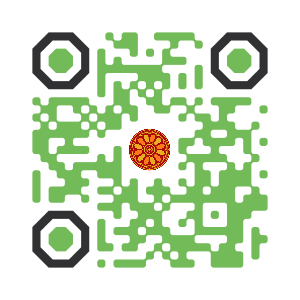
:: International Transaction Journal of Engineering, Management, & Applied Sciences & Technologies
http://TuEngr.com

ISSN 2228-9860
eISSN 1906-9642
CODEN: ITJEA8
FEATURE PEER-REVIEWED ARTICLE
Vol.11(14) (2020)
|
-
MORPHOMETRIC OF PIG LIVERS UNDER DIFFERENT DOSES OF MINERALS IN FEED ALLOWANCE
 I.V. Ziruk, A.V. Egunova, M.E. Kopchekchi (Department of Veterinary Medicine, Food Technology and Biotechnology, N.I. Vavilov Saratov State Agrarian University, Saratov, RUSSIA).
I.V. Ziruk, A.V. Egunova, M.E. Kopchekchi (Department of Veterinary Medicine, Food Technology and Biotechnology, N.I. Vavilov Saratov State Agrarian University, Saratov, RUSSIA).
V.V. Frolov, K.I. Babina (Faculty of Economic Security and Customs Affairs, Saratov socio-economic Institute (branch) of the Plekhanov Russian University of Economics, Saratov, RUSSIA),
S.N. Povetkin (Department of Food Technologies and Engineering, North Caucasus Federal University, Stavropol, RUSSIA),
V.A. Karatunov (Department of Veterinary Medicine, Kuban State Agrarian University named after I.T. Trubilin, Krasnodar, RUSSIA).
Disciplinary: Veterinary Medicine, Animal Science, Biology, Biotechnology.
DOI: 10.14456/ITJEMAST.2020.277
Keywords: Pig morphology; Microelements; Pig diet, Pig hepatocytes; Large White pigs; Hepatic cell; Pig metabolic activity; Pig liver; Pig feed with mineral additives; Nutritional quality.
AbstractIt is recognized that microelements' compounds in the inorganic form are difficult to absorb by the organism, and increasing their dose to enhance assimilation's level in animals, as a rule, promotes the development of toxicoses. Therefore, the object of this work is to study the influence of dissimilar doses of microelements' complex in organic form (based on an L-Aspartic acid) on the morphometric of the pig liver. The research and production experiment on White Large pigs living in a large pig-breeding complex was made to achieve this goal. To date, the subject has not been studied very much in literature. According to information received, the average distinction between radii from the central vein to the hepatic lobe in 7-month old pigs from different groups is 4-7 ?m. Thus, animals from the control group have 30.3?0.17 ?m radius, animals which were given to their ration 7.5% of mineral additive from normal range have 32.5?0.41 ?m (p?0.001) radius, the 2nd control group (10% of mineral additive) have 34.4?0.29 ?m (p?0.001) radius and the 3rd control group (12.5% of mineral additive) have 50.2?1.03 ?m (p?0.001) radius. We found that the addition of a 10% chelate complex of microelements (iron, zinc, manganese, copper, and cobalt) increases the activity of metabolic processes in animal organisms from control groups and causes the most expressive beneficial effect of absorbency.Paper ID: 11A14L
Cite this article:
Ziruk, I.V., Egunova, A.V., Kopchekchi, M.E., Frolov, V.V., Babina, K.I.,Povetkin, S.N., Karatunov, V.A. (2020). Morphometric of Pig Livers under Different Doses of Minerals in Feed Allowance. International Transaction Journal of Engineering, Management, & Applied Sciences & Technologies, 11(14), 11A14L, 1-10. http://doi.org/10.14456/ITJEMAST.2020.277
References:
Ao, X., Kim, H.J., Meng, Q.W., Yan, L., Cho, J.H., Kim, I.H. (2010). Effects of Diet Complexity and Fermented Soy Protein on Growth Performance and Apparent Ileal Amino Acid Digestibility in Weanling Pigs. Asian-Aust, J Anim Sci., 23(11), 1496-1502.
Ao, T., Pierce, J. (2013). The replacement of inorganic mineral salts with mineral proteinates in poultry diets. World's Poultry Science Journal: 3(69), 5-16.
Douglas, S.L, Edwards, S.A., Sutcliffe, E.S., Knap, P.W., Kyriazakis, I.D. (2013). Identification of risk factors associated with poor lifetime growth performance in pigs. Journal of Animal Science, 91(9), 4123-4132.
Iliev, P.T., Georgieva, T.M. (2016). Acute-phase proteins in sheep and goats - function, reference ranges, and assessment methods: an overview. Bulgarian Journal of Veterinary Medicine. DOI: 10.15547;bjvm.1050.
Katkov, N. V., Salautin, V. V., Ziruk, I. V. (2012). Morphology of animals Saarbrucken. (in Russian).
Lee, C. H., Kim, S. W. (2004). Aspergillus oryzae GB-107 Fermentation improves nutritional quality of food soybeans and feed soybean meals. J Med Food: 7: 430-435.
Michiels, J., et al. (2013). Ginneken Maturation of digestive function is retarded and plasma antioxidant capacity lowered in fully weaned low birth weight piglet. Br J Nutr:109:65-75.
Povetkin, ?. N., et al. (2012). Main morphological indicators of blood pigs by using asparaginates, and also new stimulating facilities (tissue preparation, sedimin and echav fractions). Veterinary Medicine of the Kuban, 2, 23-25 (in Russian).
Rekiel, A., Wiecek, J. (2005). Biochemical indices of blood serum of fatteners fed with a mixture with zinc oxide addition. Rocz Nauk PTZI: 115-121 (in Polish).
Salautin, V.V., Ziruk, I. V. (2008). Influence of a different quantity of rye on the morphological indices of the liver of the piglets. Pig breeding, 3, 32 (in Russian).
Shchitkovskaya, ?.R., Loginov, G.P., Pavlova, O.N. (2012). Effect of chelate complexes of copper and cobalt with methionine in combination with L-carnitine on the exchange of lipids in the blood serum of broiler chickens. Uchenye zapiski KGAVM im NE Bauman, Kazan, 212: 219-220 (in Russian).
Underwood, E. J, Suttle, N. F. (1999). The Mineral Nutrition of Livestock. 3rd Ed. CABI Publshing, UK: 43.
Vasilyeva, E.E., Nadeev, V.P., Yakhin, A.Ya. (2010). Use of chelated copper in pigs. Pig breeding, 2:38-40 (in Russian).
Ziruk. I.V., Salautin, V.V. (2013). Influence of some types of fodder on the organism of pigs. Saratov (in Russian).
Other issues:
Vol.11(8)(2020)
Vol.11(7)(2020)
Vol.11(6)(2020)
Vol.11(5)(2020)
Vol.11(4)(2020)
Vol.11(3)(2020)
Vol.11(2)(2020)
Vol.11(1)(2020)
Archives
Call-for-Papers
Call-for-Scientific PapersCall-for-Research Papers: ITJEMAST invites you to submit high quality papers for full peer-review and possible publication in areas pertaining engineering, science, management and technology, especially interdisciplinary/cross-disciplinary/multidisciplinary subjects.
To publish your work in the next available issue, your manuscripts together with copyright transfer document signed by all authors can be submitted via email to Editor @ TuEngr.com (no space between). (please see all detail from Instructions for Authors)
Publication and peer-reviewed process:
After the peer-review process (4-10 weeks), articles will be on-line published in the available next issue. However, the International Transaction Journal of Engineering, Management, & Applied Sciences & Technologies cannot guarantee the exact publication time as the process may take longer time, subject to peer-review approval and adjustment of the submitted articles.